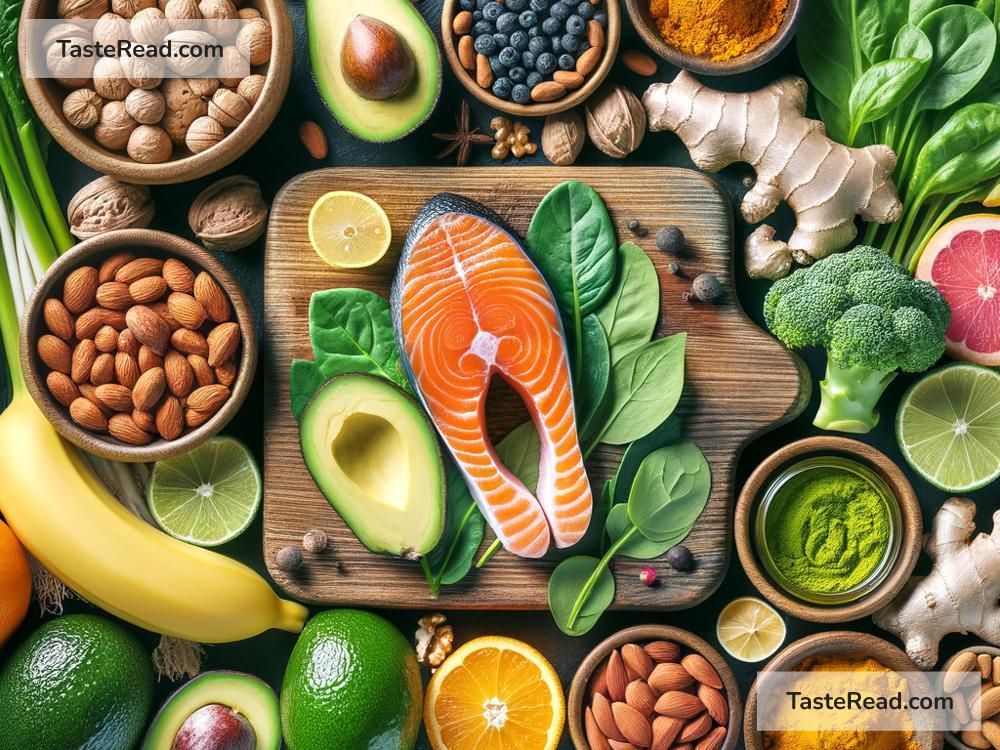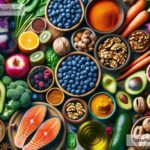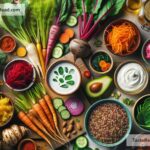Foods That Enhance Chest Wall Flexibility
Chest wall flexibility is essential for our health. It allows our lungs to expand properly, supports smooth breathing, and enhances overall mobility. If your chest muscles and connective tissues are stiff, it could limit your ability to take deep breaths or move freely. Fortunately, certain foods can help improve the flexibility of your chest wall by reducing inflammation, supporting muscle function, and promoting tissue health. Let’s explore some of these foods in simple terms.
1. Leafy Greens: Spinach, Kale, and Swiss Chard
Leafy greens are packed with nutrients like magnesium, potassium, and antioxidants. Magnesium is crucial for muscle relaxation, making it easier for your chest muscles to flex and stretch. Potassium helps balance fluid levels, preventing cramps or stiffness in the chest wall.
How to eat them: Add leafy greens to salads, smoothies, or even soups. A simple way to enjoy them is sautéing spinach with a little olive oil and garlic – delicious and healthy.
2. Fatty Fish: Salmon, Mackerel, and Sardines
Fatty fish contains omega-3 fatty acids, which are anti-inflammatory and may reduce stiffness in muscles and connective tissues. Inflammation can make your chest wall feel tight, so eating fish like salmon can help you feel more flexible.
How to enjoy: Grill or bake fish with some lemon and herbs. You can also use canned sardines in salads or on whole-grain crackers for a quick snack.
3. Nuts and Seeds: Almonds, Chia, and Flaxseeds
Nuts and seeds are rich in healthy fats, magnesium, and vitamin E. Healthy fats provide lubrication for your muscles and joints, while magnesium improves muscle function. Vitamin E helps protect tissues from damage and supports their repair, which is beneficial for chest wall flexibility.
How to eat them: Sprinkle chia or flaxseeds into your cereal or smoothies. Snack on almonds or make a homemade trail mix with your favorite nuts and seeds.
4. Fruits High in Antioxidants: Berries, Oranges, and Pineapple
Fruits like blueberries, strawberries, oranges, and pineapple are loaded with antioxidants and vitamin C. Antioxidants fight inflammation and free radicals, while vitamin C supports collagen production, keeping connective tissues in your chest strong yet flexible.
How to include them: Make a fruit salad, add berries to yogurt, or enjoy a glass of fresh orange juice. Pineapple is also great raw or blended into smoothies.
5. Whole Grains: Brown Rice, Quinoa, and Oats
Whole grains provide energy and contain minerals like magnesium and selenium, which are essential for muscle and tissue health. These minerals support the muscles around your chest wall, helping them contract and expand efficiently.
How to eat them: Switch to whole-grain bread and pasta. Try quinoa or brown rice as a side dish, or make oatmeal for breakfast with some honey and fruits.
6. Bone Broth
Bone broth is rich in collagen, gelatin, and other nutrients that improve connective tissue health. Collagen plays a major role in keeping your chest wall flexible and strong. It also supports joint health, which can indirectly help with chest movements.
How to include it: You can drink it warm as a comforting beverage or use bone broth as a base for soups and stews.
7. Avocados
Avocados are an excellent source of healthy fats, potassium, and antioxidants. The monounsaturated fats in avocados help reduce inflammation and keep muscles supple. Potassium, as mentioned earlier, prevents muscle cramps and stiffness.
How to eat them: Mash avocados to make guacamole, slice them to top your toast, or add them to salads for extra creaminess.
8. Turmeric
Turmeric contains curcumin, a powerful anti-inflammatory compound. If your chest wall feels tight due to inflammation, turmeric can help loosen it up over time. Pair it with black pepper to boost its absorption in the body.
How to use: Add turmeric to smoothies, soups, or teas. You can also sprinkle it into stir-fries or make golden milk with turmeric, milk, and honey.
9. Eggs
Eggs are rich in protein and amino acids that support muscle repair and growth. They also provide vitamin D, which is essential for strong bones and muscles, including those in your chest wall.
How to include them: Prepare eggs any way you like – scrambled, boiled, or as an omelet. They are versatile and easy to add to your diet.
10. Water
Although it’s not technically a food, staying hydrated is key to flexibility. Water helps keep your muscles and connective tissues lubricated, preventing stiffness. It also flushes out toxins that may cause inflammation.
How to drink more: Carry a reusable water bottle, add fresh fruit slices to make flavored water, or sip herbal teas throughout the day.
Final Thoughts
Improving chest wall flexibility isn’t only about exercise – what you eat plays a vital role. Foods rich in anti-inflammatory properties, vitamins, and minerals help your muscles and connective tissues work better. By making smart dietary choices, you can boost your chest wall flexibility and promote better overall health.
Try incorporating these foods into your daily meals, and pair them with deep-breathing exercises or stretches to maximize their benefits. With a little effort, you’ll breathe easier, move better, and feel more refreshed!


